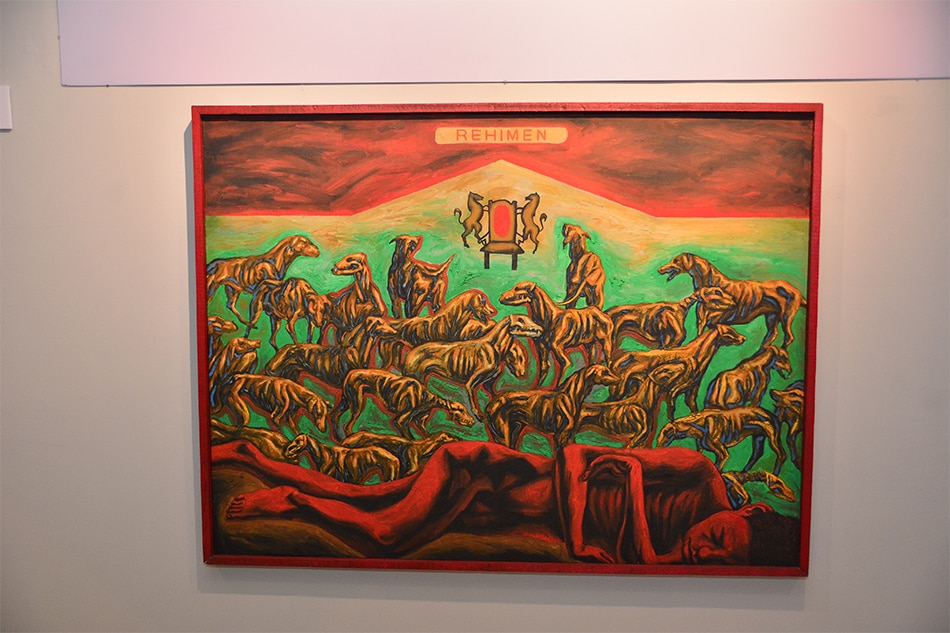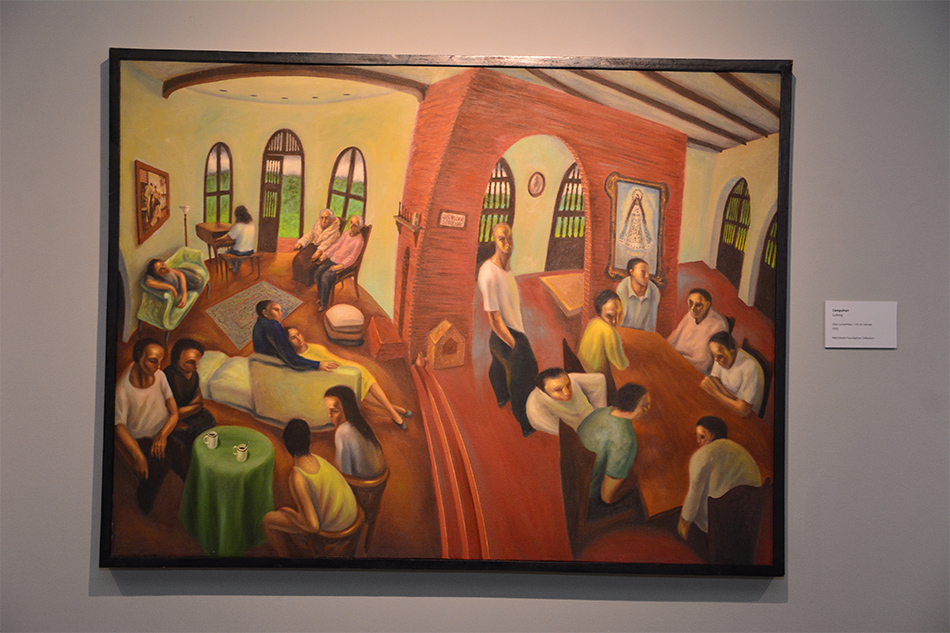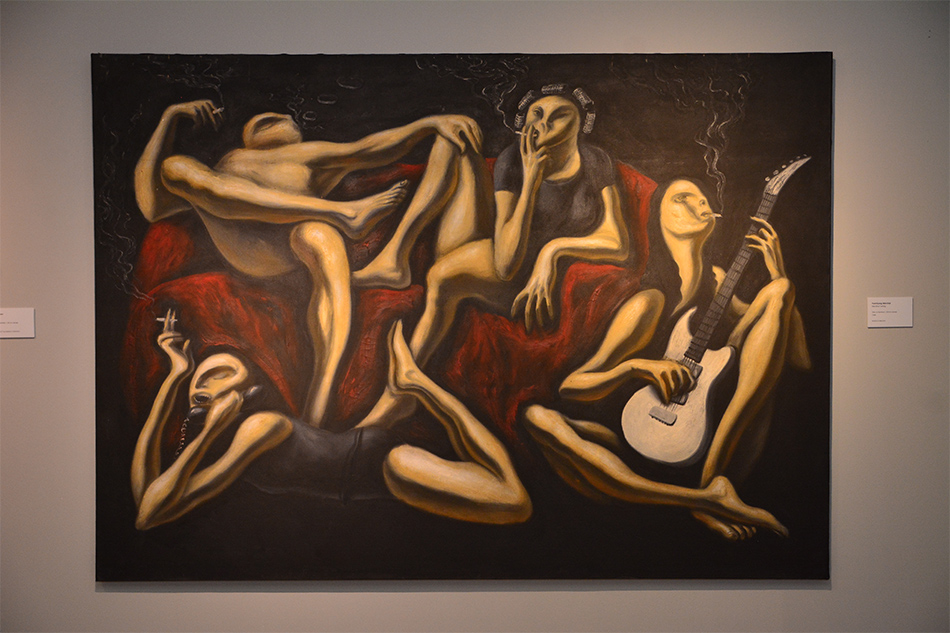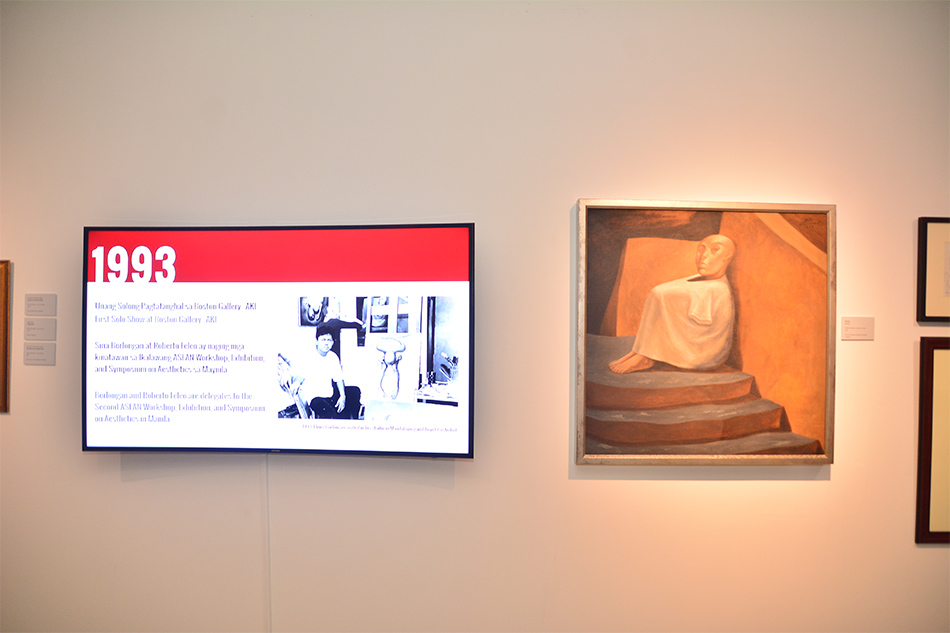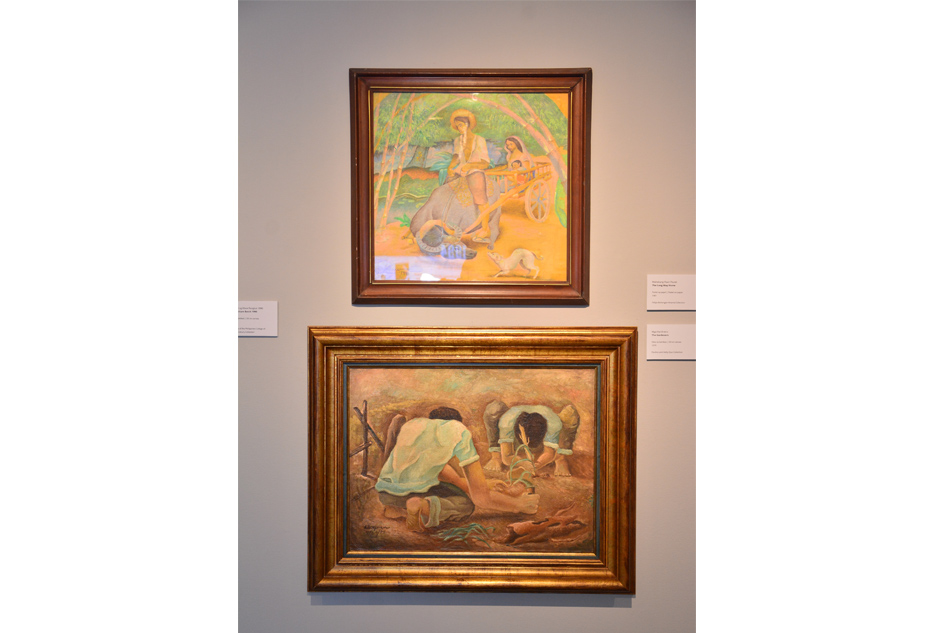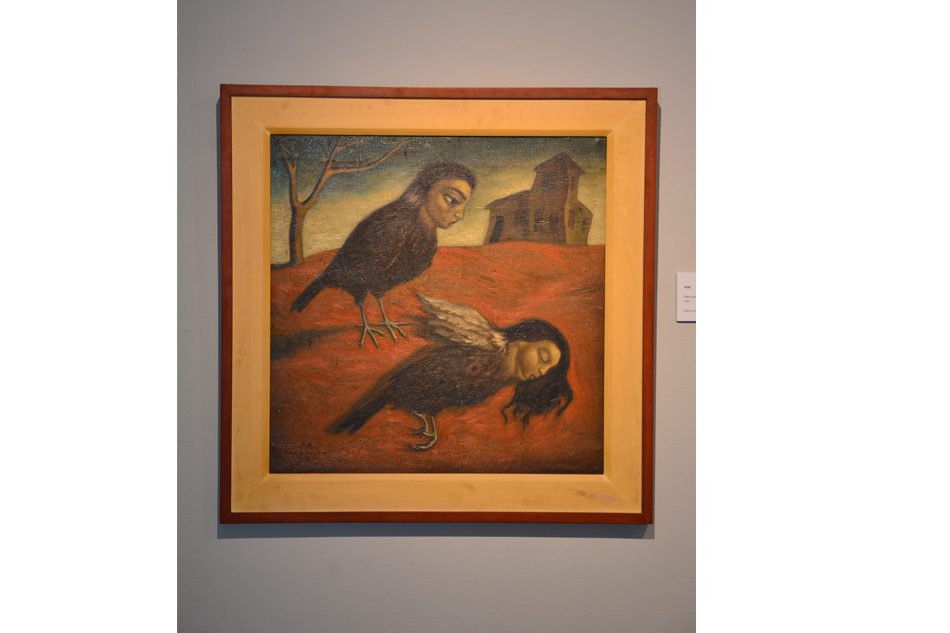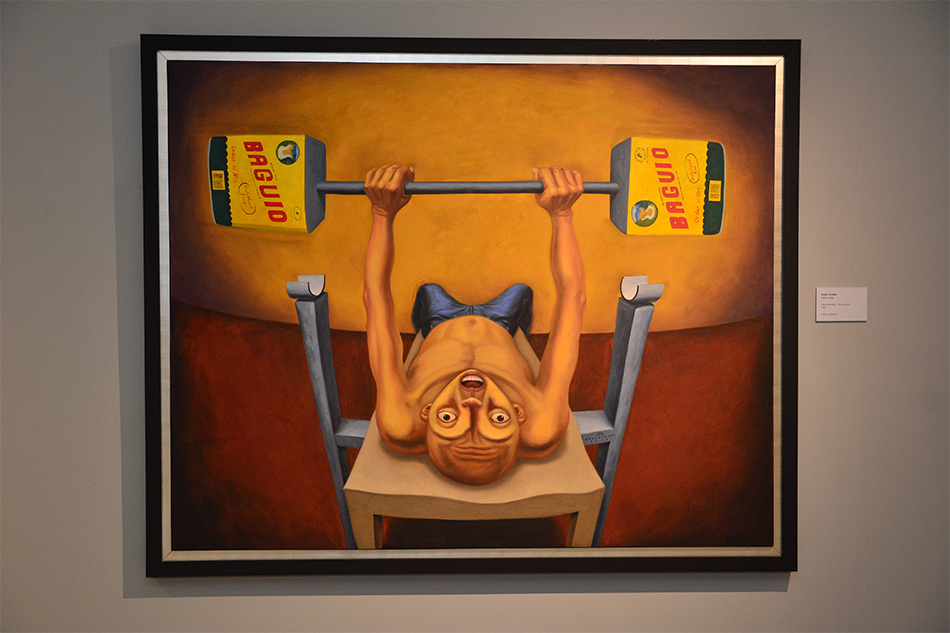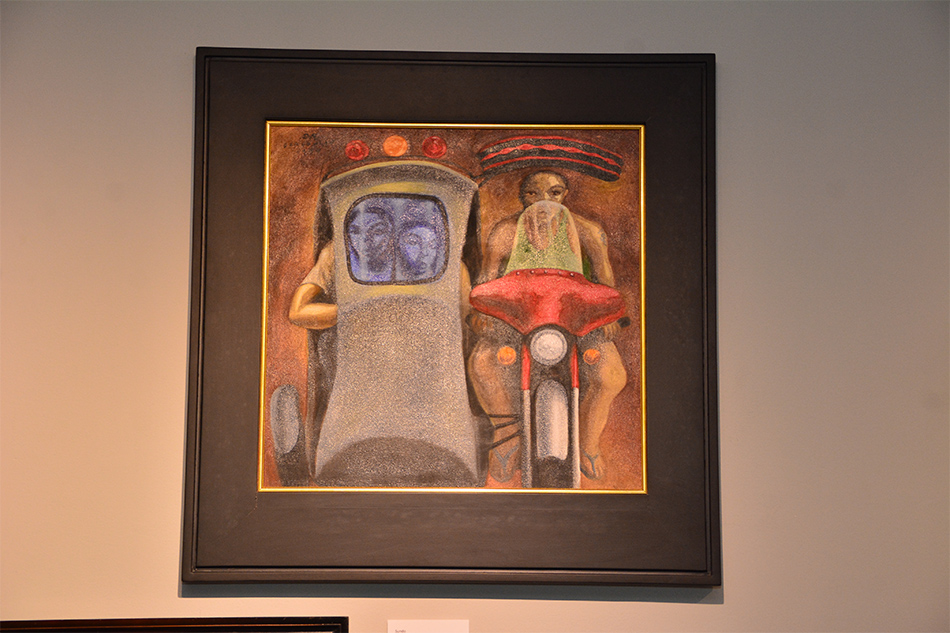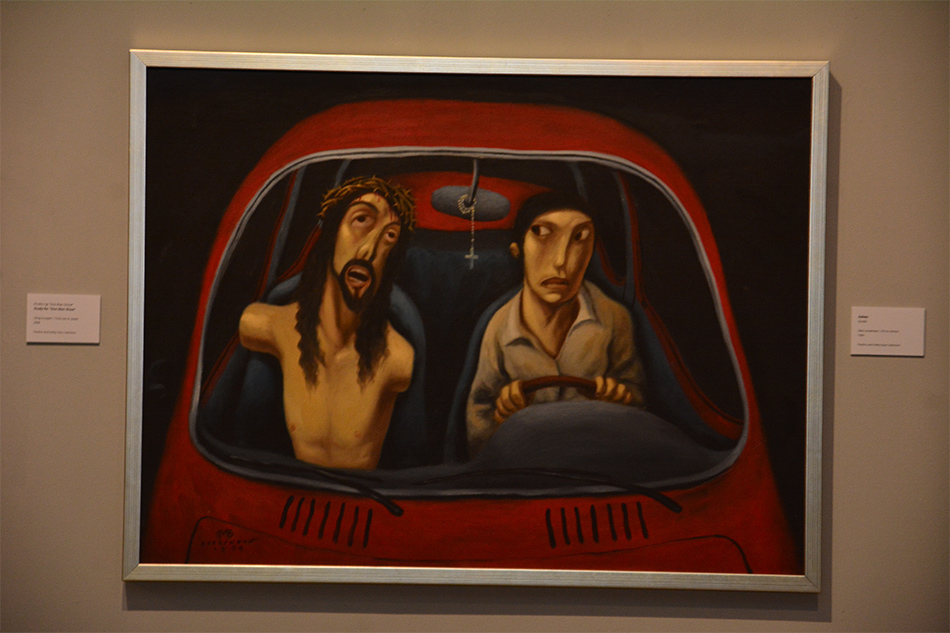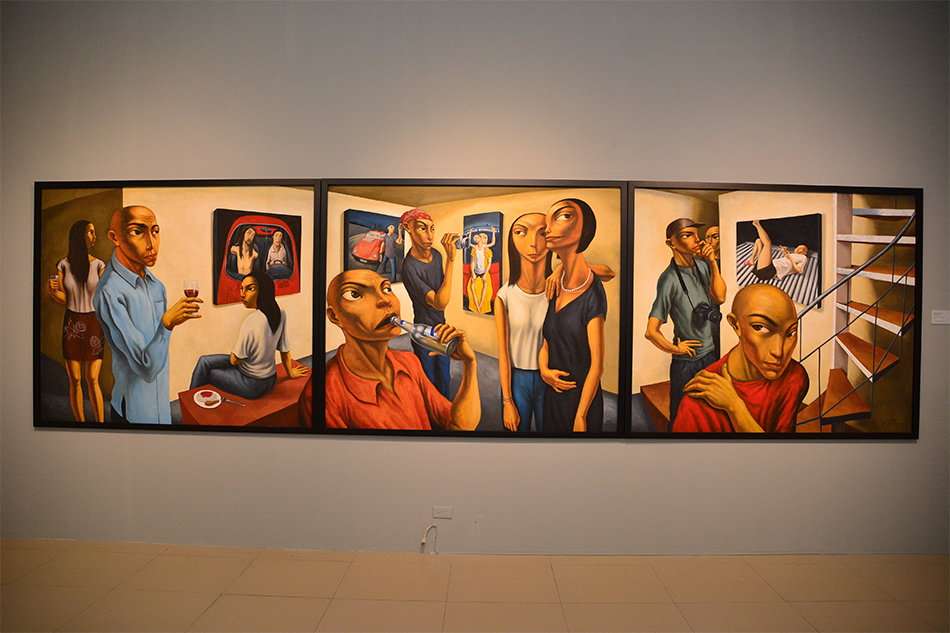10 most significant paintings of Elmer Borlongan's 25 years | ABS-CBN

Welcome, Kapamilya! We use cookies to improve your browsing experience. Continuing to use this site means you agree to our use of cookies. Tell me more!
10 most significant paintings of Elmer Borlongan's 25 years
10 most significant paintings of Elmer Borlongan's 25 years
Jerome Gomez,
ANC-X
Published Feb 01, 2018 02:07 PM PHT
|
Updated Feb 01, 2018 03:34 PM PHT
MANILA -- There will always be paintings artists will find difficult to part with, artmaking often been likened to giving birth. Elmer Borlongan welcomed the challenge of celebrating his 25th year with a retrospective, despite the enormous work events of this nature usually entail. We’re guessing it is because it will allow him to reunite with some of his favorite works, works that gave him early recognition, those that remind him of his mentors, and mark turning points in his artistic evolution.
MANILA -- There will always be paintings artists will find difficult to part with, artmaking often been likened to giving birth. Elmer Borlongan welcomed the challenge of celebrating his 25th year with a retrospective, despite the enormous work events of this nature usually entail. We’re guessing it is because it will allow him to reunite with some of his favorite works, works that gave him early recognition, those that remind him of his mentors, and mark turning points in his artistic evolution.
The day before Borlongan opened "An Extraordinary Eye for The Ordinary" at the Metropolitan Museum of Manila, he gave us a guided tour of the show, revealing the stories and inspiration behind some of his works.
The day before Borlongan opened "An Extraordinary Eye for The Ordinary" at the Metropolitan Museum of Manila, he gave us a guided tour of the show, revealing the stories and inspiration behind some of his works.
The exhibition, comprised of a dizzying 150 paintings and 50 drawings, includes his famous “Pamilyang Menthol,” part of a four-piece collection he made when he was recognized for the CCP 13 Artists Award in 1994; and “Rehimen,” the painting that won him his first major art contest, the Metrobank Annual Painting Competition in 1988 (it won second prize). In between, there is his last collaboration with his wife Plet Bolipata, the works that speak of his love for music, his devotion to the plight of the ordinary Filipino, and pieces that point to periods of experimentation.
The exhibition, comprised of a dizzying 150 paintings and 50 drawings, includes his famous “Pamilyang Menthol,” part of a four-piece collection he made when he was recognized for the CCP 13 Artists Award in 1994; and “Rehimen,” the painting that won him his first major art contest, the Metrobank Annual Painting Competition in 1988 (it won second prize). In between, there is his last collaboration with his wife Plet Bolipata, the works that speak of his love for music, his devotion to the plight of the ordinary Filipino, and pieces that point to periods of experimentation.
Through the years, the Borlongans have learned to keep at least a piece from each of Emong’s shows—if only to serve as memento, and to not to be outdone, one assumes, by his avid collectors (Paulino Que and Julius Babao among them) when it comes to growing a Borlongan collection. The couple’s effort made rounding up the collection for the retrospective just a little easier.
Through the years, the Borlongans have learned to keep at least a piece from each of Emong’s shows—if only to serve as memento, and to not to be outdone, one assumes, by his avid collectors (Paulino Que and Julius Babao among them) when it comes to growing a Borlongan collection. The couple’s effort made rounding up the collection for the retrospective just a little easier.
ADVERTISEMENT
"An Extraordinary Eye for The Ordinary: is not only a feast for the eyes, but proof of Borlongan’s unique contribution to Philippine art and the undiminished relevance of his work. Some may be more important to him than others, some more difficult to part with, but each represents a key period in his life and practice.
"An Extraordinary Eye for The Ordinary: is not only a feast for the eyes, but proof of Borlongan’s unique contribution to Philippine art and the undiminished relevance of his work. Some may be more important to him than others, some more difficult to part with, but each represents a key period in his life and practice.
We asked Emong to name for us the 10 works he deems most significant in his career, in the process telling us about his unique artistic journey.
We asked Emong to name for us the 10 works he deems most significant in his career, in the process telling us about his unique artistic journey.
ADVERTISEMENT
ADVERTISEMENT


